
#230
KAKURE CLASS
29 Sep 2015 By David Fuhrmann-Lim
Kakure is a small sake bar with a big sake selection. And the best past, a sake sommelier (yes, it’s a thing) as well. Makoto Iwabuchi is around to help you make the best choice, and as he proved, he’s badass at pairing with food too.
Somewhere in the little section of Scotts Road, Orchard, where the stoic colonial houses stand, is Kakure, a recent discovery we’re quite pleased with. (It’s near where Nektar, one of Singapore’s first bespoke cocktail bars, used to be. All right, 29 Scotts Road). Kakure is a small boutique sake bar above the famed omakase restaurant Ki-Sho.
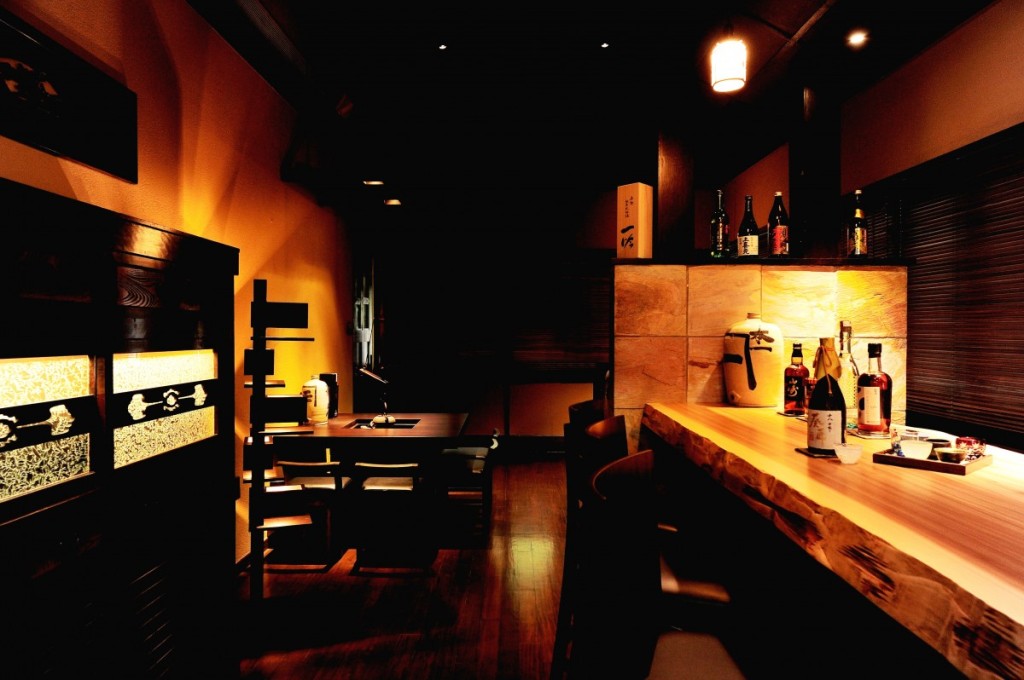
It’s an intimate space that sits less than 15 (the bar fits only five), similar to most Japanese bars.
It’s here where I encountered their kikisake-shi, the sake sommelier Makoto-san. He’s partly responsible for the drink list that focuses on small handcrafted sakes from Japan (not readily available in Singapore). Each of these sakes is brought in only once, in limited quantities; meaning you’ll find a different selection with each season. In between some killer sake recommendations, I managed to tap his expertise.
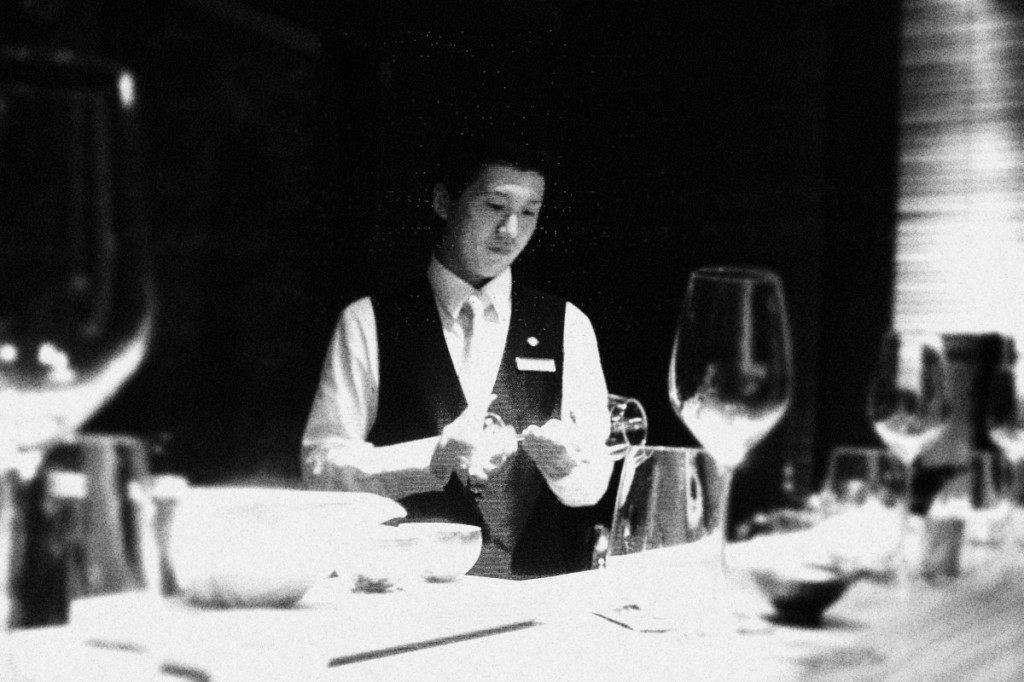
You treat sake like wines and serve it in different types of glasses, why is that? What works best with which type of sake?
“Sommeliers have to see the character of each and every type of sake, and analyse it. I have to always consider: How can I bring out the flavours of the drink? How can I make the drinking experience more interesting and delicious?
“For me, aroma is very important. If you use the sake cup, it can be more difficult to smell the sake aroma; using the sake cup mostly brings out the taste with very little aroma. If you choose to use the wine glass, you can enjoy the aroma for longer as well as the complex flavours of the sake. The mouthfeel of the sake is different because of how the sake flows onto the palate. Even the temperature must be considered – many customers here enjoy drinking cool sake but if the sake is too cold, the aroma and flavour cannot come out as well as at a slightly warmer temperature.
“These are especially important considerations for the omakase menu in Kakure and Ki-sho (more on the food later). To bring out both the flavours of the sake and the food, to make sure the experience is exciting and delicious, I use many different wine glasses and sake cups.”
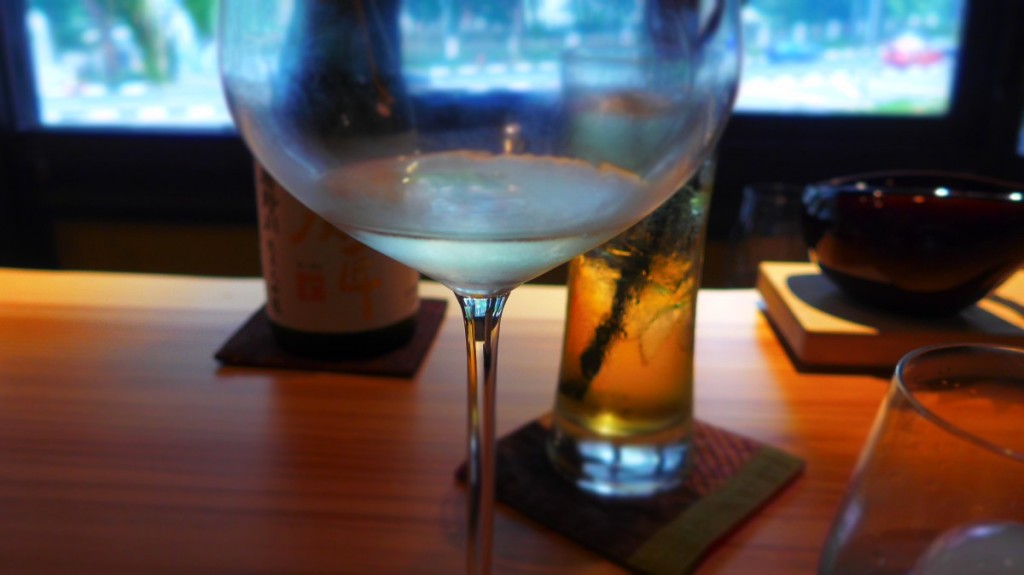
… “Sakes have many categories – but I think the ginjo category of sakes work better with wine glasses. The ginjo categories of sake is further divided into different sub-categories. As a general rule for me, I would use a balloon glass for junmai daiginjo sakes because this kind of sakes usually is very aromatic with a complex flavour. A balloon glass will bring out this aroma and taste.
“For the ginjo and junmai daiginjo sakes, I would choose a white wine glass because they are usually more subtle in aroma and taste, and the narrower shape of a white wine glass concentrates and funnels the aroma. These are general ideas and rules of thumb for me, as there are many other factors to take into consideration as well.”
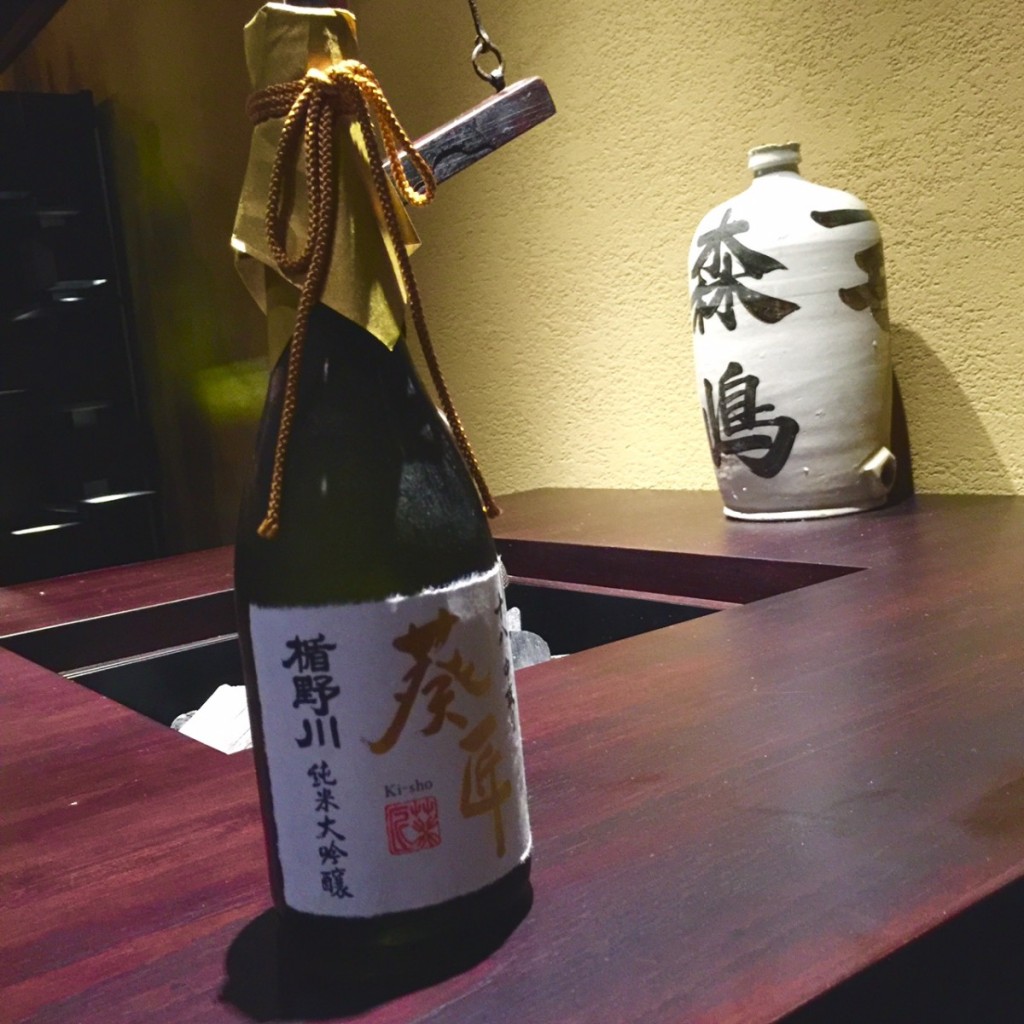
What’s your favourite type of sake?
“This is very hard to answer! It depends very much on individual sake and the mood of the moment. If I must choose one, I really like the Tatenokawa Junmai Daiginjo Ki-sho Label (above, $33/50ml glass). Very aromatic and very elegant – it’s a beautiful drink.”
What’s the most important thing you’ve picked up from your Sake Sommelier experience?
“The idea of drinking temperature – this is very similar for both sake and wine but sake takes it a step further because you can drink sake at higher temperatures. This gives more character to the sake. You get a different feeling when drinking it, and when pairing it with food.”
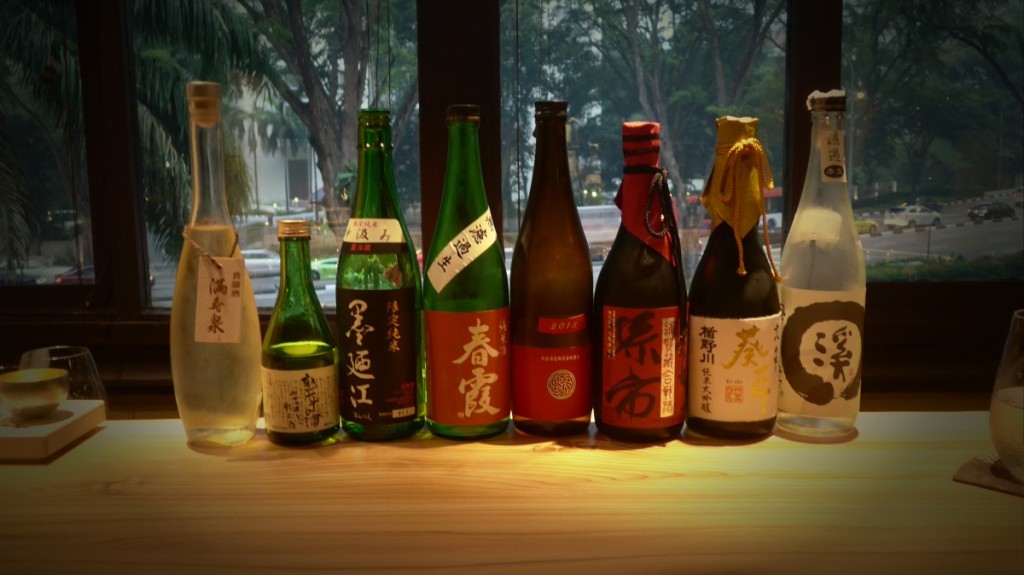 Some of the amazing sakes I encountered, and picked to match the omakase session. @davidwiseguy
Some of the amazing sakes I encountered, and picked to match the omakase session. @davidwiseguy
Most memorable drinking experience?
“For sake – it was one year ago. It was my first working day here in Kakure, and I was offered a glass of the Ki-sho Label. It was amazing, and it changed everything for me. You see, in Japan, I haven’t ever drunk sake. It is wines, beers and whiskies that are popular. Sake is seen as old-fashioned, an old man’s drink. That first glass of the Ki-sho label totally changed my perceptions and my ideas.”
Best hangover cure?
“Just keep drinking! Jokes aside, I think the best thing to do is drink plenty of water and get enough sleep.”
Person you would most like to drink with?
“My wife and my colleagues.”
What’ve you learned about life from behind the bar?
“Respect every person, be it behind the bar or in front of it.”

Cha soba with Hokkaido salmon roe, pair with Shutendoji Junmai-shu Juku nen shu ($89++ per 300ml bottle. Polish rate 60%. From Kyoto).
The omakase begins from S$88++ but final cost depends on the number of courses and type of food. The price for sake pairing is separate from omakase.

Buta Kakuni (Shoyu braised pork belly), pair with Suminoe Gentei Junmai Nakagumi ($98++ per bottle. Polish rate 60%. From Miyagi)
Some other unique dishes we had included Nanbanzuke (served with flounder fish), and Tai tan with daikon and tofu (traditional Kyoto-style simmered dish). The items on the menu can change from time to time in keeping with Chef Hamamoto’s philosophy of serving the best seasonal ingredients. Yes, reservation is recommended.
Kakure serves up to 50 types of sakes, and the menu will change time to time depending on new artisanal offerings. Orders are by bottle only, with only four sakes available from their enomatic dispenser. We’re sorry to let this little hideaway/secret out, as it’s a small spot and fills up easy. Still, would be remiss if we didn’t tell you ’bout it. Say ‘hi’ to the sommelier, and let your adventure begin.
Kakure, Chateau TCC on 29 Scotts Road, Level 2, Singapore 228224.
Operating hours: 6.30pm – 1am, Monday to Saturday
Tel: (65) 6733 5251

You might be interested in...
DRINK HERE: SINGAPORE SAKE FESTIVAL 2024
Singapore's Oldest Sake Festival Turns 9 This Weekend and You're Invited!
DRINK THIS: RASEN SAKE
Chef Willin Has Helped to Create a Sake to Pair With Singapore Cuisine. Subarashi!
SAKE MATSURI 2023
If You Only Go to Two Events This Year, Then Make Both The Sake Matsuris Your Drinking Highlight. The Second Edition For 2023 is Happening on 1-2 April — Get Your Tickets Now.
DRINK HERE: SINGAPORE SAKE FESTIVAL 2024
DRINK THIS: RASEN SAKE
SAKE MATSURI 2023